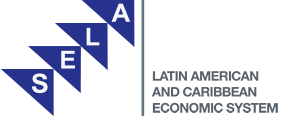BACKGROUND
Within the framework of the Ibero-American Summits – particularly the ones held in Santiago, Chile (2007) and El Salvador (2008) – and the Summits of the Group of Rio, specific mandates have been issued to analyze and assess Ibero-American mechanisms to respond to emergencies derived from natural disasters, bearing in mind the increased vulnerability of our countries as a result of the climate change.
Analysis of this issue began with the “Meeting on Mechanisms to respond to Emergencies derived from Natural Disasters”, carried out in Mexico City on 24 and 25 September 2008, under the auspices of the Ibero-American General Secretariat (SEGIB) and the Secretariat of Foreign Affairs of Mexico.
In order to reinforce the exchange of ideas on this issue, two Seminars on Mechanisms to respond to Natural Disasters were scheduled for 2009, the first one to analyze the experiences in the Andean region and the Southern Cone (3 and 4 September 2009, Caracas), and the second one to evaluate the experiences of Mexico, Central America and the Caribbean (15 and 16 October 2009, Panama City). Both seminars were organized by the Permanent Secretariat of the Latin American and Caribbean Economic System (SELA) and the Ibero-American General Secretariat (SEGIB), with the collaboration of the Spanish Agency of International Cooperation for Development (AECID) and the Government of Mexico.
The objective of these Seminars was to continue with the process of reflection that began in Mexico City as regards the possibility of establishing a simplified Latin American mechanism to respond to emergencies derived from natural disasters. Participants identified some national and regional cooperation mechanisms to facilitate and to speed up the reception of international cooperation in case of disaster. They also analyzed the feasibility of creating a solidarity emergency fund to face natural disasters.
Even though the objectives of the seminars are very important and the region has attached priority to them, they have turned out to be very difficult to materialize – particularly the one related to the creation of a solidarity emergency fund to face natural disasters. The world economic and financial crisis and its effects on the countries of Latin America and the Caribbean make it difficult to establish financial funds and affect prospects to receive international cooperation and humanitarian aid.
Nevertheless, some “innovative” financial mechanisms which could benefit the region have began to emerge recently, including “catastrophe bonds”, insurance and reinsurance mechanisms in case of disasters, as well as many other financial instruments in this area.
The Inter-American Development Bank (IDB) is sponsoring a regional insurance mechanism for disaster risk management in case of natural catastrophes which amounts to US$ 600 million, and it will soon start up a Pilot Programme for developing a Regional Insurance Facility in case of Natural Disasters in Central America and Dominican Republic.
The Caribbean Catastrophe Risk Insurance Facility (CCRIF) is an insurance mechanism for the governments of the Caribbean, which is headquartered and operates in the Caribbean. It offers insurance based on individual country risk profiles and it is designed to reduce the economic impact of catastrophic hurricanes and earthquakes in Caribbean countries, by swiftly restoring short-term liquidity. It is the first regional insurance fund that offers Caribbean governments the unique opportunity to obtain coverage for natural catastrophes at the smallest possible cost. CCRIF represents a shift in the paradigm on how Caribbean governments are dealing with risk, and has become the leader in the area of pre-disaster planning. By setting up a multi-country risk pool, the governments of the Caribbean have managed to save around 40% of the costs that each one had to pay separately in commercial insurance markets. It is made up by 16 Caribbean States: Anguila, Antigua and Barbuda, Bahamas, Barbados, Belize, Bermuda, Cayman Islands, Dominica, Grenada, Haiti, Jamaica, St. Kitts and Nevis, St. Lucia, St. Vincent and the Grenadines, Trinidad and Tobago, and Turks and Caicos.
The CCRIF is financed by the World Bank, Canada, France, the United Kingdom, the Caribbean Development Bank, Japan, and the European Union, among others, with contributions surpassing US$ 60 million.
Other national initiatives have also been undertaken: i) Bolivia is about to implement an agricultural insurance against natural disasters, with which some 500,000 producers will be able to guarantee up to 70% of their harvests (Ministry of Rural Development); ii) Ecuador is organizing a National System of Agricultural Insurance to compensate losses suffered by farmers in the wake of natural disasters, so as to protect producers and food sovereignty (Ministry of Agriculture); iii) Mexico has gained experience with agricultural insurances against natural disasters since 1990, and in 2006 it started to issue catastrophe bonds; iv) Colombia has granted contingency credits since 2005, and in 2007 it established agricultural insurances against natural disasters; v) Peru is undertaking studies to establish an agricultural insurance in order to respond to natural disasters as of 2009.
Analyzing these financial instruments in case of disasters could be very useful for the region in view of the current situation of world economic and financial crisis.






